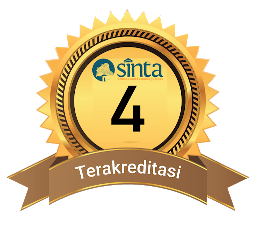Efektivitas STEM Terhadap Pemahaman Konsep Kimia Siswa Ditinjau dari Perbedaan Gender
DOI:
10.29303/cep.v8i1.4863Published:
2025-05-31Issue:
Vol. 8 No. 1 (2025): Edisi MeiKeywords:
STEM learning, understanding of concepts and genderArticles
Downloads
How to Cite
Abstract
This study aims to determine the effectiveness of a lesson using the STEM (Science, Technology, Engineering and Mathematics) approach to students' understanding of chemistry concepts in terms of gender differences. The research method uses a quasi-experimental design by conducting pretest and posttest during learning. Sampling using purposive sampling technique. The sample in this study were 71 students of class XI MIPA 3 and XI MIPA 4 at Terara 1 Public High School, consisting of 36 students in class XI MIPA 3 as the experimental class and 35 students in class XI MIPA 4 as the control class. The data collection technique for this study used multiple choice questions and a questionnaire that had gone through validation tests and reliability tests to get students' understanding of chemistry concepts. The hypothesis test shows moderate criteria and the effect size test obtains a value of 0.3 with moderate criteria. Therefore, it can be concluded that the STEM approach affects students' understanding of concepts and gender does not affect students' understanding of concepts.
References
Arikunto Suharsimi. (2013). Prosedur penelitian suatu pendekatan praktik. Jakarta: Rineka Cipta. http://r2kn.litbang.kemkes.go.id:8080/handle/123456789/62880.
Astra, R. R. S., Vilela, A., Pereira, J., & Zou, S. (2022). Pengaruh Gender Terhadap Kemampuan Berpikir Kreatif Siswa SMP Yang Telah Memperoleh Pendekatan RME. Matematika Inovatif). 5(1): 307–316. https://doi.org/10.22460/jpmi.v5i1.307-316.
Bagiyono. (2017). Analisis Tingkat Kesukaran dan Daya Pembeda Sial Ujian Pelatihan Radiografi Tingkat 1. Widyanuklida. 16(1): 1–12. http://repo-nkm.batan.go.id/140/1/05_analisis_tingkat_kesukaran.pdf.
Erpina., Hasjmy, M. A., & Salimi, A. (2014). Pengaruh kooperatif teknik talking stick terhadap hasil pembelajaran pendidikan kewarganegaraan di SD. Jurnal Pendidikan Dan Pembelajaran. 3(9): 1-16.
Fitri, Z., & Hartati, R. (2013). Penerapan Pendekatan Sains Teknologi Masyarakat (STM) Pada Materi Koloid di MAN Kuta Baro Aceh Besar. Chimica Didactica Acta Journalournal. 1(1): 41–47
Fitriani, A., Prayogi, S., & Hidayat, S. (2015). Pengaruh Model Pembelajaran Predict, Observe, Explain, Write (Poew) Terhadap Pemahaman Konsep Fisika Ditinjau Dari Jenis Kelamin Kelas Xi Ipa Sma Negeri 1 Empang. Lensa: Jurnal Kependidikan Fisika. 3(1): 2338-4417. https://doi.org/10.33394/j-lkf.v3i1.335.
Indrawati, N., & Tasni, N. (2017). Analisis Kemampuan Pemecahan Masalah Berdasarkan Tingkat Kompleksitas Masalah dan Perbedaan Gender. Saintifik. 2(1):16–25.https://doi.org/10.31605/saintifik.v2i1.92.
Khasanah, M., Utami, R. E., & Rasiman, R. (2020). Analisis Kemampuan Pemahaman Konsep Matematis Siswa SMA Berdasarkan Gender. Imajiner: Jurnal Matematika Dan Pendidikan Matematika. 2(5): 347–354. https://doi.org/10.26877/imajiner.v2i5.6517.
Purwoko, A. A., Mutiah, M., Al Idrus, S. W., & Anwar, Y. A. S. (2020). Analisis Peluang Pengembangan Model Pembelajaran Kimia Berbasis STEM Pada Siswa SMA Se-Kota Mataram. Jurnal Pijar Mipa. 15(3): 200–205.https://doi.org/10.29303/jpm.v15i3.1742
Putra, A. L., Kasdi, A., & Subroto, W. T. (2019). Pengaruh Media Google Earth Terhadap Hasil Belajar Berdasarkan Keaktifan Siswa Kelas Iv Tema Indahnya Negeriku Di Sekolah Dasar. Jurnal Review Pendidikan Dasar : Jurnal Kajian Pendidikan Dan Hasil Penelitian. 5(3): 1034–1042. https://doi.org/10.26740/jrpd.v5n3.p1034-1042.
Sandi, G. (2021). Pengaruh Pendekatan Stem Untuk Meningkatkan Pemahaman Konsep Elektroplating, Keterampilan Berpikir Kritis Dan Bekerja Sama. Indonesian Journal of Educational Development. 1(4): 578–585. https://doi.org/10.5281/zenodo.4559843.
Sumartati, L. (2020). Pendekatan Science, Technology, Engineering and Mathematics Dalam Pembelajaran Kimia 4.0. Jentre, 1(1): 1–8. https://doi.org/10.38075/jen.v1i1.
Tseng, K. H., Chang, C. C., Lou, S. J., & Chen, W. P. (2013). Attitudes Towards Science, Technology, Engineering And Mathematics (STEM) In A Project-Based Learning (Pjbl) Environment. International Journal Of Technology And Design Education. 23(1): 87–102. https://doi.org/10.1007/s10798-011-9160-x.
Widiadnyana, I. W., Sadia, I. ., & Suastra, I. (2014). Pengaruh Model Discovery Learning Terhadap Pemahaman Konsep
IPA dan Sikap Ilmiah Siswa SMP. Jurnal Pendidikan Dan Pembelajaran IPA Indonesia. 4(2): 1–13. https://ejournal-pasca.undiksha.ac.id/index.php/jurnal_ipa/article/view/1344.
Author Biographies
Parida Sri Rosmini, Universitas Mataram
Baiq Fara Dwirani Sofia, Program Studi Pendidikan Kimia, Universitas Mataram. Mataram, Indonesia
License
Copyright (c) 2025 Parida Sri Rosmini, Baiq Fara Dwirani Sofia; Lalu Rudyat Telly Savalas, Syarifa Wahidah Al Idrus

This work is licensed under a Creative Commons Attribution-ShareAlike 4.0 International License.
Authors who publish with Chemistry Education Practice agree to the following terms:
- Authors retain copyright and grant the journal right of first publication with the work simultaneously licensed under a Creative Commons Attribution License 4.0 International License (CC-BY-SA License). This license allows authors to use all articles, data sets, graphics, and appendices in data mining applications, search engines, web sites, blogs, and other platforms by providing an appropriate reference. The journal allows the author(s) to hold the copyright without restrictions and will retain publishing rights without restrictions.
- Authors are able to enter into separate, additional contractual arrangements for the non-exclusive distribution of the journal's published version of the work (e.g., post it to an institutional repository or publish it in a book), with an acknowledgement of its initial publication in Chemistry Education Practice.
- Authors are permitted and encouraged to post their work online (e.g., in institutional repositories or on their website) prior to and during the submission process, as it can lead to productive exchanges, as well as earlier and greater citation of published work (See The Effect of Open Access).






